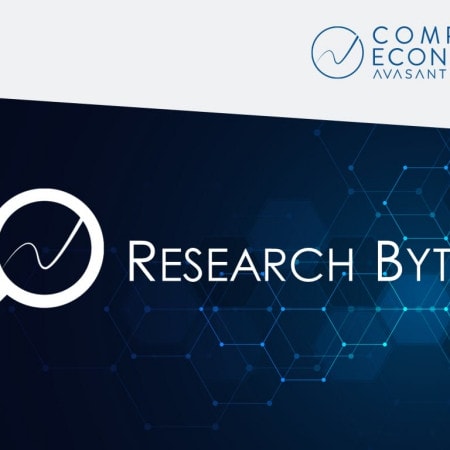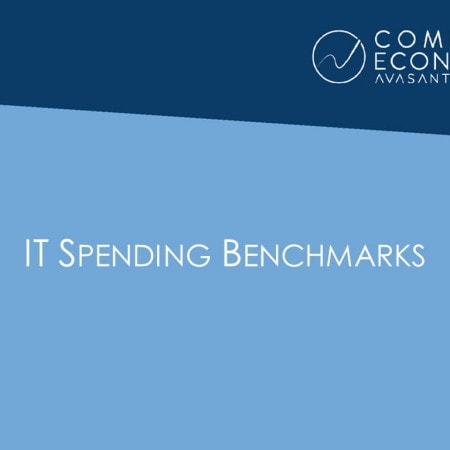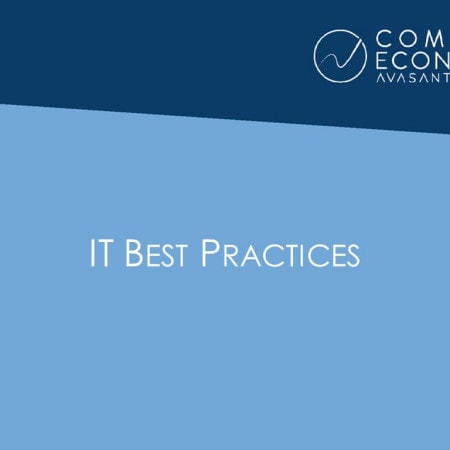-

Big Cost Savings from a Mobile Workforce Strategy
Computer Economics' research indicates that establishing a mobile workforce can produce annual savings ranging between $1,350 and $3,500 per worker. These savings are partially a result of the elimination of costly real estate, but the primary value of a mobile workforce is the resultant boost in productivity.
July, 2004
-

XML Economics Beat EDI in B2B Transactions
Methods for handling B2B transactions are in flux as the cost advantages of using the Internet grow increasingly apparent. The alternatives receiving the most attention are the venerable EDI format and emerging XML-based solutions. The question of which solution is better for your organization depends heavily on your trading partnersâ preferences as well as the economic performance of each method.
July, 2004
-

IS Management and Technology Strategies (2004)
This special report, based on surveys of over 200 IS executives conducted by Computer Economics during 1Q04, examines the TCO and ROI of every major category of hardware, a wide array of software systems, several e-strategies, as well as several critical technical strategies such as server consolidation, data warehousing and on demand computing. The current level of activity of these strategies will be reviewed as well. Many critical IS disciplines are examined including personnel, financial, workload, recovery, security, problem managementâand many others. The information provided in this study is a useful tool when building a technology roadmap that is supported by solid IS management practices.
July, 2004
-

Wireless TCO Is Decreasing in Many Organizations
Wireless networks, more commonly referred to as Wi-Fi, are increasing both in quantity and performance. The ability to log into a network and use resources such as storage and printers without physical connectivity is attractive--especially to the mobile workers within an organization. Selecting an effective approach for installing Wi-Fi within your company requires first understanding the options available and the trade-offs inherent in each.
July, 2004
-

Impact of Malicious Code (Jun 2004)
Understanding the impact and severity of viruses, worms, and trojan horse attacks can help you better prepare for future events and, in the end, save you valuable time and money. This 30-plus page report reviews the current 2004 threat level of malware attacks on a global basis, as well as examining the financial cost impact of major attacks since 1999. Additionally, new trends in virus detection and intrusion prevention are reviewed.
June, 2004
-

Many IS Disciplines Are Poorly Managed
In order for an IS organization to successfully support the needs of its constituency, a wide array of disciplines must be efficiently and effectively managed. These disciplines include both technical and non-technical processes, and require the skills and talents of a variety of specialists.
June, 2004
-

Solving the Four Problems with ERP
Once you understand the nature of the problem or problems with an ERP system, how should you go about finding solutions?
June, 2004
-

Wireless Networking in the Enterprise
Wireless networks, more commonly referred to as Wi-Fi, are increasing both in quantity and performance. Selecting an effective approach for installing Wi-Fi within your company requires first understanding the options available and the trade-offs inherent in each. Wi-Fi remains an emerging technology, and some of the fundamental protocols are still under development. This immaturity does not necessarily imply great risk in developing a wireless network, but it does signal the need for caution in making choices. Click here to purchase. - $125 (USD)
June, 2004
-

.NET vs. J2EE: The Application Infrastructure Battle
The battle continues between the open standard and the Microsoft standard in market application development and deployment technologies. While the lion's share of the application market is built around Sun Microsystems' Java 2 Platform, Enterprise Edition (J2EE), a growing portion centers on the Microsoft Platform, which relies on Windows, .NET, COM+ and other technologies. This article provides an update on the advantages and disadvantages of each platform, and when and why you need an application server in the first place. The article covers the benefits and the risks of aligning your enterprise architecture with one camp or the other, and suggests ways for making a rational decision.
June, 2004
-

PeopleSoft Breathes New Life Into JDE World Product
PeopleSoft has finally developed a strategy for the old World product that it picked up with its acquisition of J.D. Edwards last year.
June, 2004
-

IS Scorecard: Service Level Management
Service level management (SLM) is a key IT discipline that establishes controls in support of the corporate business imperatives and service-level objectives across the entire IS organization. Basically, SLM provides the mechanisms for establishing level of service expectations associated with each product or service provided to an IS customer. This includes developing and managing processes, policies, procedures, and the support staff required to effectively execute this critical discipline.
June, 2004
-

2004/2005 Information Systems Spending and Technology Trends
Each year, since 1990, Computer Economics, Inc. interviews and surveys hundreds of IT managers, CIOs, CEOs, and CFOs in private industry and government. These in-depth studies gather IT planning, staffing, and budgetary information to disclose the drivers behind the trends.
June, 2004
-

Four Problems with ERP
Often, ERP system users become increasingly unhappy with their new systems. An independent assessment determined that there are four categories of system problems.
May, 2004
-

Early Adopters Reap Benefits as Voice over IP Gains Momentum
The rollout of Voice over IP will hit high speed during 2004. The rationale for all this activity is that VoIP users save money by avoiding long distance access charges and government dictated taxes. The ROI received by most of the users points toward its financially soundness, while the TCO indicates that unexpected expenses are unusual. Click here to purchase. - $150 (USD)
May, 2004

 Grid View
Grid View List View
List View